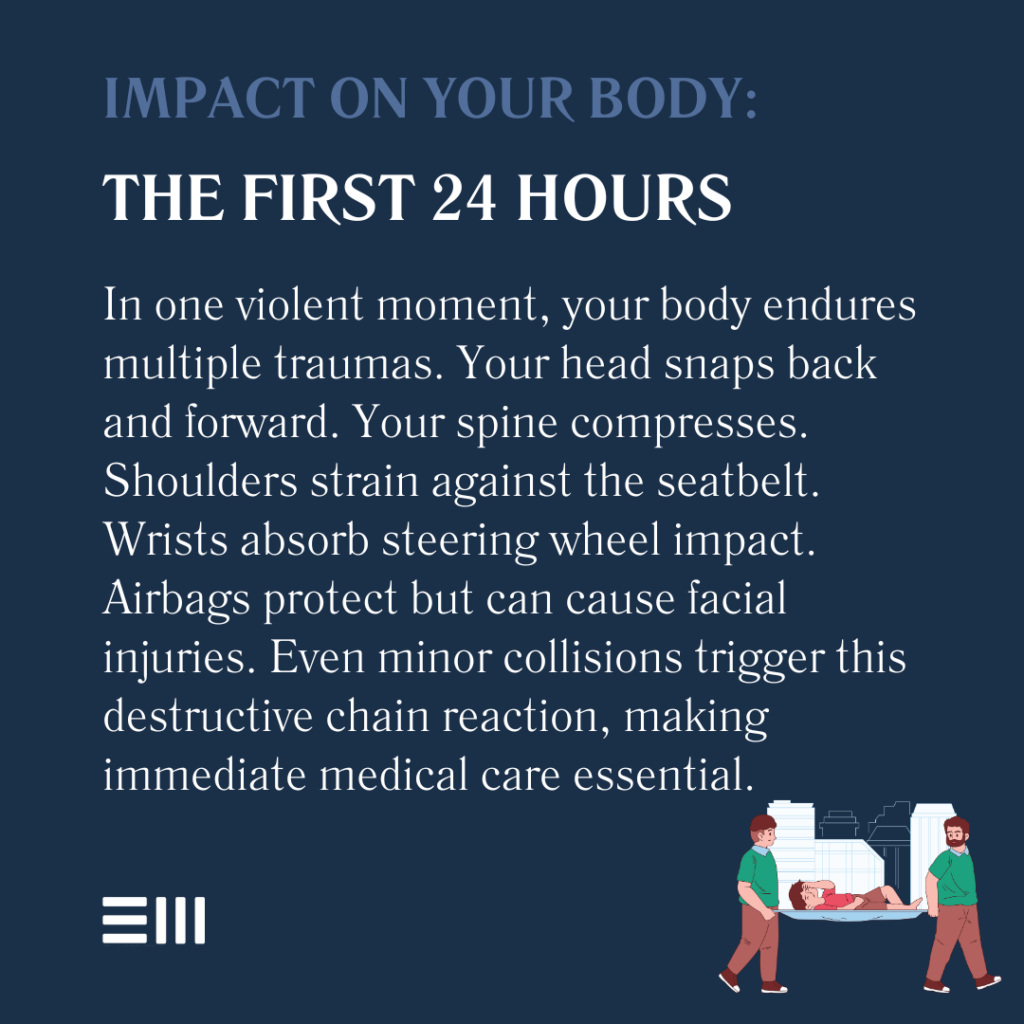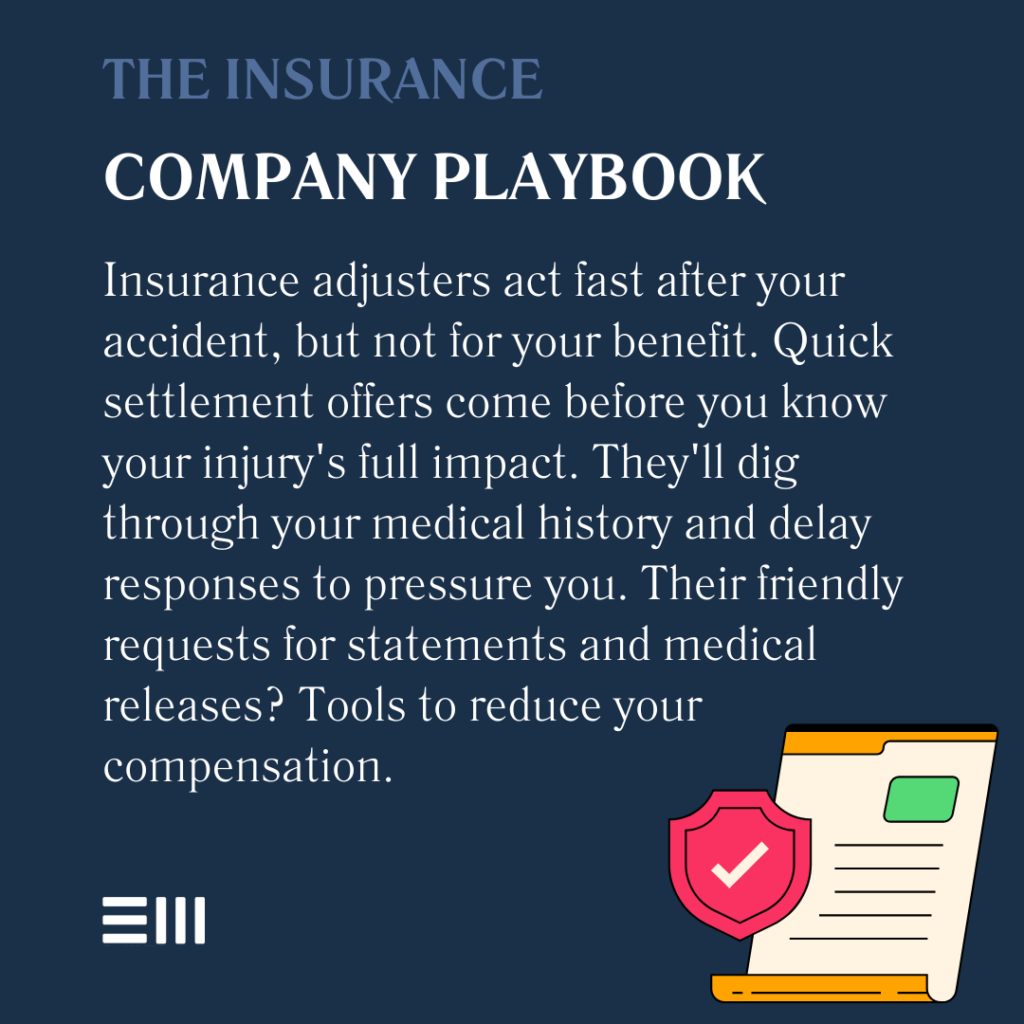
More than 1.7 million rear-end collisions shake American roadways each year, leaving over 500,000 people injured and causing 1,700 deaths.
Behind each statistic lies a person facing medical bills, insurance paperwork, and the daunting challenge of proving fault.
Whether you’re sitting at a red light or slowing down for traffic, a sudden impact from behind can transform your life in seconds.
Understanding Rear-End Collision Dynamics and Risk Factors
The physics of rear-end collisions creates unique injury patterns that can affect victims differently.
When a vehicle strikes from behind, the sudden forward thrust can subject occupants to forces up to 2.5 times their body weight. Alabama’s high-speed highways and congested urban corridors in Birmingham, Mobile, and Montgomery create particular risk zones for these incidents.
Common scenarios leading to rear-end collisions include:
- Distracted driving (accounting for 87% of rear-end crashes);
- Following too closely on rain-slicked Alabama roads;
- Sudden stops in heavy interstate traffic;
- Fatigued driving during long-haul routes;
- Mobile device use while driving;
- Poor weather conditions affecting visibility;
- Mechanical failures, especially brake system malfunctions;
- Aggressive driving behaviors;
- Construction zone confusion; and
- Impaired driving incidents.
Understanding these risk factors helps drivers stay vigilant and take preventive measures on Alabama’s diverse roadways, from bustling city streets to rural highways.
Common Injuries from Rear-End Collisions
The human body absorbs significant trauma during a rear-end impact. Understanding these injuries helps victims recognize symptoms and seek appropriate care.
Many injuries may not manifest immediately, making medical evaluation crucial even after seemingly minor collisions.
Immediate Impact Injuries:
- Whiplash and neck strain;
- Back and spinal cord trauma;
- Head injuries and concussions;
- Facial injuries from airbag deployment;
- Wrist and arm injuries from bracing;
- Shoulder injuries from seatbelt restraint;
- Knee injuries from impact with dashboard;
- Glass-related cuts and abrasions;
- Chest trauma from steering wheel impact; and
- Ankle and foot injuries.
These immediate injuries often require emergency medical attention and can lead to significant recovery periods.
Prompt treatment improves outcomes and strengthens injury documentation for legal claims.
Delayed Onset Injuries
- Soft tissue damage;
- Herniated discs;
- Nerve compression;
- Chronic pain syndromes;
- Post-traumatic headaches;
- Vertigo and balance issues;
- Memory and concentration problems;
- Sleep disturbances;
- Psychological trauma; and
- Chronic fatigue.
Understanding these delayed symptoms helps victims recognize when to seek additional medical evaluation and ensures comprehensive treatment for full recovery.

Documenting Your Injury and Building Your Case
Proper documentation strengthens your position when seeking compensation. Alabama’s contributory negligence law makes thorough evidence collection particularly crucial, as even slight shared fault can impact your right to recovery.
Essential steps include:
- Photographing vehicle damage and the accident scene;
- Obtaining police reports and witness statements;
- Keeping detailed medical records and treatment plans;
- Tracking all expenses related to the accident;
- Maintaining a daily pain and symptom journal;
- Preserving all communication with insurance companies;
- Collecting surveillance footage when available;
- Gathering expert witness testimony;
- Documenting lost work time and opportunities; and
- Recording impact on daily activities.
This comprehensive documentation creates a strong foundation for negotiating with insurance companies and presenting evidence in court proceedings if necessary.
Understanding Your Legal Rights in Alabama
Alabama’s legal framework provides specific protections for rear-end collision victims while setting strict requirements for claims.
The state’s two-year statute of limitations means timing is critical. Understanding these rights helps victims navigate the complex legal landscape effectively.
Key legal considerations include:
- Right to seek compensation for medical expenses;
- Coverage for lost wages and earning capacity;
- Claims for pain and suffering;
- Property damage compensation;
- Future medical care costs;
- Impact on quality of life;
- Loss of consortium claims;
- Emotional distress damages;
- Punitive damages in cases of gross negligence; and
- Right to legal representation.
These legal protections ensure victims can pursue full compensation for both economic and non-economic damages resulting from rear-end collisions.
Insurance Considerations and Pitfalls
Insurance companies often approach rear-end collisions with predetermined strategies. Understanding these can help protect your interests and avoid common pitfalls that could compromise your claim’s value.
Common insurance challenges:
- Quick settlement offers below true claim value;
- Disputes over pre-existing conditions;
- Attempts to minimize injury severity;
- Delayed processing tactics;
- Coverage limit negotiations;
- Claims of shared fault;
- Requests for recorded statements;
- Pressure to sign medical releases;
- Denial of legitimate claims; and
- Misrepresentation of policy terms.
Recognizing these tactics helps victims protect their rights and make informed decisions when dealing with insurance adjusters.

Prevention and Safety Measures
While not all accidents are preventable, certain practices can reduce risk and severity of rear-end collisions. Modern technology and defensive driving techniques provide additional layers of protection.
Safety practices include:
- Maintaining proper following distance;
- Regular vehicle maintenance;
- Checking brake lights and signals;
- Installing dash cameras;
- Being aware of weather conditions;
- Avoiding distractions while driving;
- Using advanced driver assistance systems;
- Maintaining proper tire pressure;
- Planning routes to avoid high-risk areas; and
- Regular brake system inspections.
These preventive measures significantly reduce collision risk and provide valuable evidence if an accident occurs despite precautions.
Frequently Asked Questions About Rear-End Collisions in Alabama
Understanding your rights and responsibilities after a rear-end collision helps you make informed decisions.
Here are answers to common questions we receive from Alabama drivers.
What Should I Do Immediately After a Rear-End Collision?
Document the scene, seek medical attention, and contact law enforcement. Never admit fault or make statements about your condition without medical evaluation. Keep communication with other drivers minimal and factual.
How Long Do I Have to File a Claim in Alabama?
Alabama’s statute of limitations allows two years from the accident date to file a personal injury claim. Property damage claims follow the same timeline. Missing this deadline typically bars recovery.
What if the Other Driver Claims I Stopped Too Suddenly?
Alabama law generally places responsibility on the following driver to maintain safe distance and control.
However, sudden stops require careful documentation to defend against contributory negligence claims. Witness statements and traffic camera footage can help establish the sequence of events.
Will My Insurance Rates Increase After a Rear-End Collision?
Rate changes depend on fault determination and your insurance provider’s policies. A thorough investigation often proves the rear driver’s responsibility. Working with an experienced attorney can help protect your interests and insurance status.
How Can I Prove My Injuries Were Caused by the Accident?
Immediate medical evaluation, consistent treatment, and expert testimony help establish the connection between the collision and your injuries.
Medical documentation and expert analysis create a clear link between the impact and resulting damages.
What Compensation Can I Recover for a Rear-End Collision?
Damages may include medical expenses, lost wages, property damage, pain and suffering, and future care costs.
Each case’s value depends on specific circumstances and evidence. An experienced attorney can help calculate full compensation value.
Transform Your Case into Action: Next Steps with Baxley Maniscalco
Your rear-end collision case deserves experienced legal representation. At Baxley Maniscalco, we understand Alabama’s complex personal injury laws and insurance requirements.
Our track record of successful settlements and verdicts speaks to our commitment to maximizing client compensation.
Don’t let insurance companies minimize your claim. Contact us today for a free consultation and case evaluation. Our experienced team will:
- Review your case details;
- Explain your legal options;
- Handle insurance communications;
- Fight for maximum compensation;
- Guide you through recovery;
- Manage all legal paperwork;
- Coordinate with medical providers;
- Negotiate with insurance adjusters;
- Prepare for trial if necessary; and
- Keep you informed throughout the process.
Our commitment to client success and deep understanding of Alabama personal injury law ensures comprehensive representation for your case.
Can't find what you're looking for? Search our site below.










